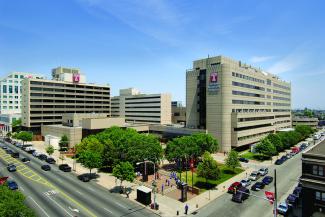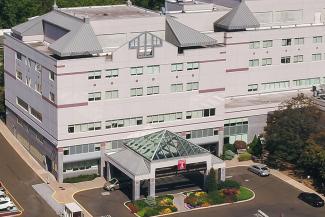Problems with the heart’s electrical impulses may cause it to beat too fast, too slowly, or erratically, leading to dizziness, uncomfortable sensations, shortness of breath or other issues. These heart rhythm issues (arrhythmias) can originate in different areas of the heart muscle. Temple’s electrophysiologists (EPs) and cardiovascular surgeons can help diagnose difficult or advanced arrhythmias.
Cardiac Ablation
Conditions Treated
Treatment Options
One treatment option for some arrhythmias is to destroy (ablate) the faulty signal’s point of origin or the path by which it spreads. There are several different types of ablation that can help with arrhythmias. These include procedures for atrial fibrillation (in which the heart’s top chambers, the atria, beat fast or erratically) or ventricular tachycardia (in which the heart’s lower chambers beat too quickly) that does not respond to drug therapy. Ablation often alleviates the symptoms and risks associated with an arrhythmia, reduces the need for drugs, increases quality of life, and in some cases may cure the problem completely.
Catheter Ablation
To perform an ablation, the electrophysiologist (often called an EP) or cardiovascular surgeon inserts a thin, flexible tube called a catheter into a blood vessel in the patient’s neck, arm or groin and gently guides it through the blood vessels to the heart. The catheter is tipped with electrodes that monitor the heart’s electrical behavior to pinpoint the source of the problem. The interventionist then uses the catheter to aim radio waves that destroy a very small area of heart tissue. Alternatively, the EP may target extremely cold temperatures to the site for the same purpose (cryoablation).
Different techniques may be used depending on the nature of the arrhythmia. In atrial fibrillation, the faulty signal often originates where the pulmonary veins feed into the left atrium. Destroying these hotspots or isolating them with a ring of dead tissue may restore regular heart rhythm. In another common procedure, the interventionist may ablate the narrow electrical pathway between the atria and the ventricles (the AV node), to prevent the signal from reaching the ventricles and causing them to beat too fast; a pacemaker is required after AV node ablation.
Why Temple?
The skill and capabilities of Temple’s electrophysiology specialists have made Temple a leading regional referral center for complex ablations. Our catheterization/electrophysiology facility is one of the largest in Pennsylvania, equipped with advanced technologies to assess and manage rhythm disorders.
The electrophysiologists and cardiovascular surgeons at Temple can offer some of the newest and most sophisticated ablation techniques for A-Fib and ventricular tachycardia, including pulmonary vein isolation, left atrial linear ablation, and complex atrial fractionated electrogram (CAFÉ) ablation. The majority of A-Fib patients who receive ablations at Temple have fewer symptoms and reduced side effects from medications, which might also help reduce the long-term risks of stroke and heart failure.
Ready for an Appointment?
Find a doctor near you, request an appointment, or call 800-TEMPLE-MED (800-836-7536) today.
Our Locations
The locations listed below are physician practices on Temple Health campuses. For a full list of providers, go to our Find a Doctor search.

